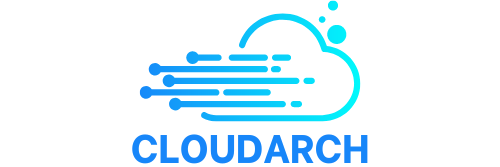So you’ve installed Helm, taken your first breath in this world of Kubernetes package management, and you’re wondering… Now what? What makes Helm truly magical isn’t just that it simplifies your deployments — it’s where it gets its powers from: the Helm repository.
If Helm is the Kubernetes version of a package manager, then Helm repos are its treasure chests. And just like any good explorer, you’re going to need to know where to find the maps.
So… what is a Helm repo, really? 🤔
Let’s imagine you’re building a house in Kubernetes. Instead of crafting each brick by hand (writing all those YAMLs), you can order a ready-to-assemble kit. That kit? It’s called a Helm chart. And where do you get it from? A Helm repository.
A Helm repo is basically a collection of Helm charts — pre-packaged Kubernetes applications that are ready for deployment. These charts are stored in an online repository, which you can connect to and browse from your terminal.
Think of it like a Play Store or App Store, but for Kubernetes.
The Default Chart Repo: Bitnami & Friends
The Helm team maintains a default, stable repo full of widely-used applications: NGINX, MySQL, Prometheus, Grafana, WordPress… you name it. One of the most popular ones is from Bitnami, which packages and maintains a huge collection of up-to-date and secure charts.
But the real beauty is this: you can add any Helm repo to your local setup — official, third-party, or even your own private one.
Let’s get our hands dirty 🧤💻
Adding a Helm repo is as simple as a single command. For example, to add Bitnami’s public repository:
helm repo add bitnami https://charts.bitnami.com/bitnamiThat’s it. You’ve just connected your Helm CLI to a vast world of applications.
Want to make sure everything’s in sync?
helm repo updateThis command refreshes the list of available charts and their latest versions from all the repos you’ve added.
To check which repos you currently have on your machine:
helm repo listIt’ll show you a tidy little table with all your configured repositories. Nice and clean.
Exploring the Chart Library with helm search 🔍
Once you’ve added a repository — say Bitnami — and updated it, you’re probably thinking: “Cool… but what can I actually install?”
That’s where the magic of searching comes in.
You can use:
helm search repo wordpressAnd Helm will scan through all your added repositories and list any charts that match the name “wordpress”. It’ll even show you the latest version and a short description — kind of like browsing a menu at a restaurant, but for apps in your Kubernetes cluster 🍽️.
Want to see everything available from Bitnami? Just do:
helm search repo bitnamiAnd boom — a full buffet of deployable goodness.
This command is especially useful when you’re not quite sure what you’re looking for, or when you’re exploring new tools to add to your stack.
Installing Charts from Repos 🧙♂️✨
Now comes the fun part. Let’s say you want to install WordPress in your Kubernetes cluster (because why not launch a blog while you’re launching containers? 😄).
Installing any chart is as easy as using the helm install command following with some parameters:
helm install <name for your app, you choose it> <reponame_chart>Once you’ve added Bitnami’s repo, you can run:
helm install my-wordpress bitnami/wordpressBoom. Helm fetches the chart from the Bitnami repo, installs it into your cluster, and gives you all the necessary info to access it.
You don’t even need to download the chart locally unless you want to customize it (more on that in a future post 😉).
Behind the Scenes 🕵️
When you install a chart from a repo, Helm does a few things:
- It looks up the chart metadata in the repo index.
- It pulls down a
.tgz(tar.gz) package that contains all the YAML templates, values, and configuration. - It renders those templates with your values and sends the final manifests to Kubernetes.
The best part? You didn’t touch a single YAML file.
Final Thoughts 🧠
Getting familiar with Helm repos is a crucial step in mastering Helm — and honestly, it’s where the fun begins. You now have access to hundreds of production-grade Kubernetes apps, just a command away.
But don’t stop here.
Next, we’re going to explore how to customize these charts to suit your environment, your values, and your style (yes, Kubernetes can have style 👨🎨).
Until then, try playing with a few different charts. Install Redis, launch a full monitoring stack with Prometheus + Grafana, or spin up your own Jenkins CI system — all in just a few keystrokes.
Your cluster will thank you. 😌
👉 Enjoying the series?
Make sure to follow, subscribe, or share this post with someone who still thinks Helm is just something you wear on a boat. 😄
#Helm #Kubernetes #DevOps #CloudNative #K8s #InfrastructureAsCode #HelmCharts
